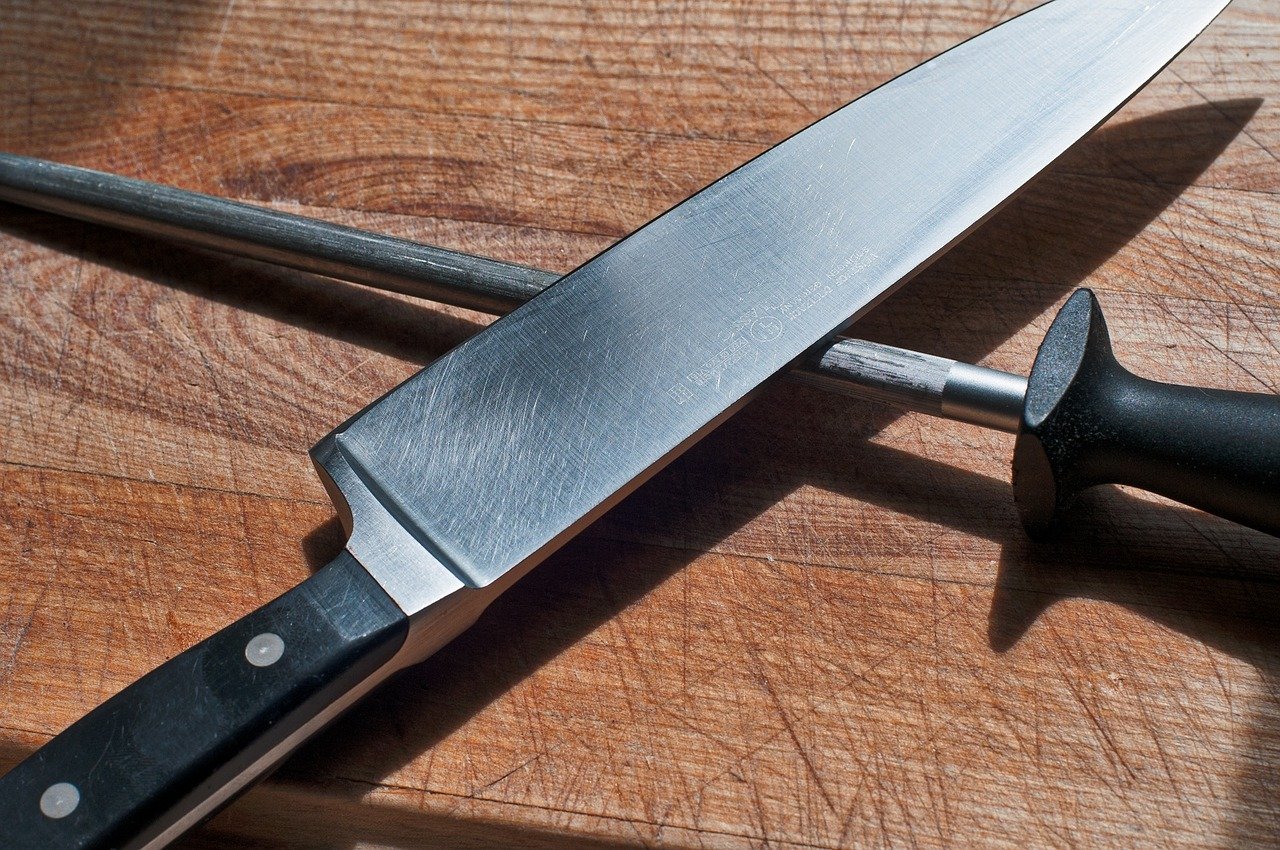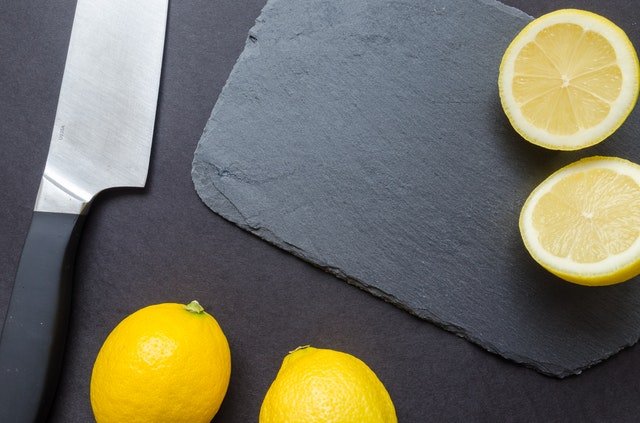To properly maintain a kitchen knife is to increase its life considerably. This is why it is essential to wash each tool’s blade thoroughly after preparing a recipe or at the end of a meal and store it in a dry and safe place in the kitchen.
When caring for kitchen knives, it is important to consider various aspects such as the material it is made of, its proper use, and where it should be stored to preserve its integrity. In taking care of kitchen knives, it would largely depend on the wide array of materials that are used in making them.
For every kind of material used, there is a corresponding kind of maintenance that a kitchen knife needs since the components of a certain material are different from another material. However, there is a general way of taking care of the knife.
Now… Let’s dig a little deeper;
Here are various steps that anyone can follow in caring for their kitchen knife. First would be using wood or polyethylene chopping boards is one of the best possible ways to preserve the knife’s integrity compared to using glass, stone, marble, ceramic, and other hard surfaces as they can dull, blunt, or damage the knife’s blade.
The second is to follow the dos and don’ts in taking care of knives.
Do clean the knives after every use. To clean the knife, wipe the knife quickly with a smooth cloth or sponge, dry it, and put it away. This prevents the knife from rusting or any other damage.
Do sharpen the knife to achieve a smooth and hone blade. Sharpening knives is not an easy task since it is also one of the causes that damage the knife.
Related Articles:
- Best Chef’s Knives For The Money ( Reviews And Buying Guide)
- Tips And Tricks To Keep Your Knives Razor Sharps
- Top 5 Kitchen Knife Sets With Block to But In 2019
All you need is a whetstone and honing steel. There are three steps in sharpening the knife. The first step is grinding using the grinding wheel or using a whetstone.
The second step is steeling using honing steel. And, the third step is stropping on a razor strop or buffing on a wheel.
Do store the knife properly. There are 4 ways to store knives as Knife Blocks, Magnetic Bars, Knife Sleeves, and Knife Cases.
Knife Blocks are made of wood or plastic and it is seen mostly in our kitchen where it can be easily accessed. It comes in diverse sizes.
Magnetic Bars are mounted on the wall. It is intended to hold the knives tightly in place.
Knife Sleeves are rigorous plastic sleeves that fully enclose the blades of the knives. It is the only way anyone can store knives in drawers with the other kitchen utensils.
Knife Cases is the choice of chefs who like to carry their knives with them. The case is padded and it has elastic loops to hold the knife steadily. It has mesh pockets and fasteners.
Don’t leave it lying around in the kitchen where it will bang into other cutlery. Putting it away quickly avoids the possibility of dulling the blade. Don’t put that expensive knife in the dishwasher because the handle will loosen over time.
The blade of a knife is made from a different material from the handle and each will expand and contract differently.
Care and maintenance of kitchen knives according to the nature of the blade steel
To know how to maintain a kitchen knife is, first of all, to give as much care as possible to its blade to preserve its sharpness. It must be remembered that the cleaning of kitchen knives depends primarily on the material used for the manufacture of their blade: we do not wash in the same way a stainless steel knife and a carbon steel knife. The main risk is premature oxidation of the blade.
1st case: ceramic and stainless steel
If the ceramic tools and stainless steel have a life of relatively high, it still should know to provide regular maintenance for this type of kitchen knife.
The ceramic rarely has a problem, since it is made of chemically neutral (pH equivalent to 7), it does not fear any corrosive attack.
The cleaning of a kitchen knife based on zirconium oxide (the mineral used for the production of ceramics) is therefore easy.
After use, you can, for example, pass underwater as much as you want and let it dry in the open air.
The maintenance of a stainless-steel kitchen knife is also quite easy. High in chromium, stainless steel is by definition impermeable to any form of oxidation.
The cleaning of the blade of such a kitchen knife operates in general with a little hot water and soap, or other sweet products.
Beware of dishwashing liquids that are a bit too aggressive and do not allow them to air dry. After rinsing with water, wipe it with a cotton towel or scratch-resistant cloth.
NB: You may notice that some forged stainless steel knives may lose some of their shine over time, or skate by taking a yellow, blue or gray hue.
This phenomenon is quite normal, it corresponds to very slight surface oxidation that protects the blade.
But if you want to give them all their brilliance, you can rub them with a small tool called a burnisher, it will work wonders!
2nd case: maintain and clean the blade of a carbon steel kitchen knife
Free from any element of alloy supposed to protect them from the corrosive attacks, the carbon steel knives require more precautions, which does not mean that they are less powerful than the blades in stainless steel, far from there! These tools are even very common in the culinary world.
While the cleaning blade of carbon steel kitchen knife is nevertheless possible to the water, but then you should take precautions to limit the appearance of signs or marks of rust.
Here are some tips for general maintenance of a carbon steel kitchen knife:
- Never let it soak in a sink filled with water.
- Do not use soap, dish soap, or detergent.
- Wipe the blade immediately with a clean, dry cloth after cleaning the knife with a damp sponge.
- Never let it dry in the open air.
- Keep the kitchen knife away from dust, in a drawer or storage block provided for this purpose.
Care Tips For Kitchen Knives and Effective Remedies
When the blade of a kitchen knife tarnishes and loses its brilliance, simple and effective natural reflexes can give it a new shine.
- Vinegar and potato!
Vinegar: very effective for the maintenance and cleaning of the blade of a kitchen knife! The vinegar has excellent virtues of cleanliness.
It is advisable to use it hot for even more efficiency. Rub the blade with a cloth soaked in vinegar and wipe with a clean cloth. That’s all!
-
Potato
Has there been any success in the maintenance of a kitchen knife with a potato? The answer is a big yes!
The use of potatoes to care for kitchen knives works real miracles: cut one in half and rub the blade. The starch contained in the potato will act as a natural anti-rust on the steel. Then rinse the knife and dry it.
- The essence of turpentine
Cleaning the blade of a kitchen knife with a sponge soaked in turpentine is a remedy classic and performance. It helps to remove rust and white spots almost for sure.
- The lemon
The lemon is ideal for removing black spots that are embedded on a blade over time. The procedure is as follows: dip the blade in a mixture of water and lemon juice (1 part lemon juice for 5 parts water) for a few seconds, then rinse and dry with a soft, non-rough cloth. Repeat as necessary.
- The cork
The cleaning of a kitchen knife with a cork rest gives a beautiful shine to the blade. Wet a cork before dipping it in wood ash. Then rub the cap on the blade before wiping cleanly. That’s it!
Sharpening a kitchen knife
Even if you take proper care of your kitchen knife, there will always be that time when you have to sharpen your knife due to blunting from usage.
The disadvantage of using a blunt knife is that you automatically exert more pressure which creates a risk of an accident.
It is therefore advisable to keep your knives sharp when it gets blunt. And also, it will make your knife more efficient.
As far as grinding is concerned, it is advisable that you not wait until the last minute. It is very much easier to keep a reasonably sharp knife than to give back to a very dull knife.
In conclusion
these steps can help anyone in maintaining the integrity of the knife. It is important to follow these steps in taking good care of your kitchen knife since it not only saves you money by not buying another knife but these steps are also an alternative to maintaining the original health of a very expensive knife.
Here are a few hand-picked articles for you to read next:
- Kitchen Knives Types Guide
- Usuba vs Nakiri: Which knife is Better For You?
- Gyuto Knife Versus Santoku?
Feel free to share your observations with me in the comments section!
Also, if you find the information in this post to be useful, be sure to share this post with your friends on Facebook, Twitter, and Pinterest!





